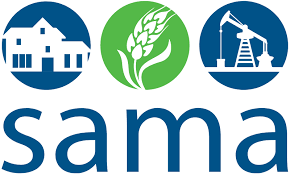


PROJECT SUMMARY
This study is a collaborative effort by the Saskatchewan Assessment Management Agency
(SAMA), Information Systems Management (ISM) Canada, and the University of Regina (funded by MITACS).
SAMA is responsible for property assessment of agricultural land for tax base purposes. SAMA maintains and periodically updates an arable land assessment model and manual. This study will aid in an improved method of rural land assessment through an updated understanding of the climate and geography of Saskatchewan’s agricultural region, and its relation to various crop yields, land assessment, and environmental factors. The overall objective of the project is to re-evaluate the climate factor in the arable land productivity model used for property assessment within Saskatchewan by SAMA.
This re-evaluation of the climate factor is needed given significant changes over the past several decades in crop diversity and production, the climate of the Prairie Provinces, GIS technology, and digital data. The project will address this objective with the processing, analysis and interpretation of a substantial amount of georeferenced data for Saskatchewan’s agricultural region, which represents about 40% of Canada’s cropland. On a base layer of townships and rural municipalities, we will superimpose land use, crop yield data, historical weather station and interpolated observations, digital elevation data, and climate change projections from Regional Climate Models (RCMs). Using methods of spatial regression, we will create statistical models relating the average annual yield of various crops to monthly and seasonal weather and climate data for 296 Rural Municipalities (RMs) throughout the six soil zones comprising the arable agricultural zone of Saskatchewan. These models will reveal the extent to which crop yield varies with climate across Saskatchewan, and identify the controlling weather and climate variables for predicting wheat yield. Final project deliverables will include a GIS model that can be updated and applied for agricultural land assessment, as well as maps of the new climate ratings by Rural Municipality (RM) and soil zone. This research will thus document trends in climate and crop yields over the past 35-50 years and explore the effects of extreme weather and future climate changes on agricultural productivity in Saskatchewan.